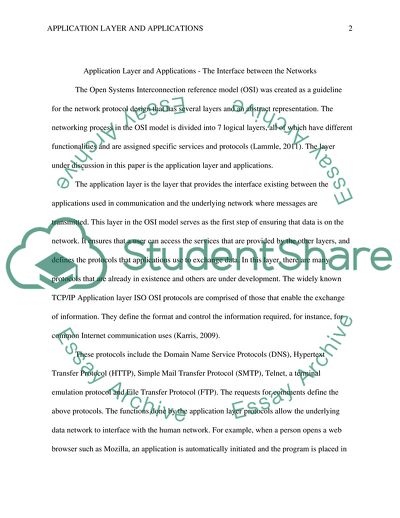Cite this document
(Application Layer and Applications - The Interface between the Networks Literature review Example | Topics and Well Written Essays - 1750 words, n.d.)
Application Layer and Applications - The Interface between the Networks Literature review Example | Topics and Well Written Essays - 1750 words. https://studentshare.org/information-technology/1837435-data-communications-and-networking
Application Layer and Applications - The Interface between the Networks Literature review Example | Topics and Well Written Essays - 1750 words. https://studentshare.org/information-technology/1837435-data-communications-and-networking
(Application Layer and Applications - The Interface Between the Networks Literature Review Example | Topics and Well Written Essays - 1750 Words)
Application Layer and Applications - The Interface Between the Networks Literature Review Example | Topics and Well Written Essays - 1750 Words. https://studentshare.org/information-technology/1837435-data-communications-and-networking.
Application Layer and Applications - The Interface Between the Networks Literature Review Example | Topics and Well Written Essays - 1750 Words. https://studentshare.org/information-technology/1837435-data-communications-and-networking.
“Application Layer and Applications - The Interface Between the Networks Literature Review Example | Topics and Well Written Essays - 1750 Words”. https://studentshare.org/information-technology/1837435-data-communications-and-networking.


